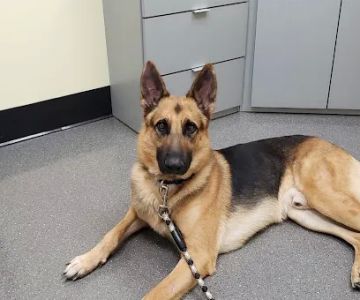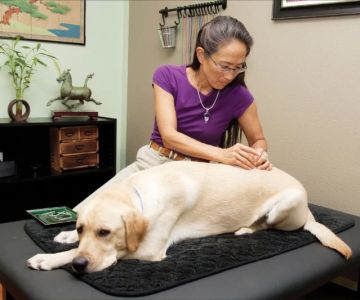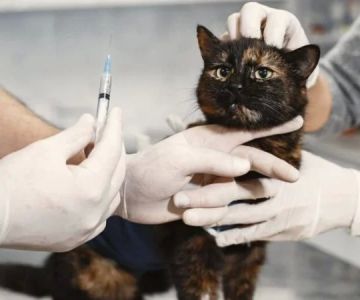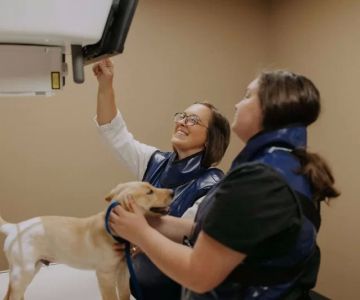What Does It Take to Train as a Veterinarian?
Becoming a veterinarian is a dream for many animal lovers, but the journey to this rewarding profession is not an easy one. Having spent years researching this career path and speaking with veterinarians, I can tell you that the road to becoming a licensed vet involves a blend of rigorous education, hands-on experience, and unwavering dedication to animal care. If you’re interested in becoming a veterinarian, it’s important to understand the training and steps involved in the process. In this article, I’ll walk you through the essential stages of training to become a veterinarian and provide you with valuable insights to help you make informed decisions about your future career.
pgsql复制- 1. The Path to Becoming a Veterinarian: An Overview
- 2. Educational Requirements for Veterinarians
- 3. Gaining Hands-on Experience: Internships and Volunteering
- 4. Veterinary School: What You Need to Know
- 5. Licensure and Certification: Taking the Final Steps
1. The Path to Becoming a Veterinarian: An Overview
To become a veterinarian, you need to follow a clear career path. It starts with a passion for animals and an eagerness to help them. As someone who has spent years researching the profession, I can tell you that the journey requires long hours of study and practical training. Before you can become a fully licensed vet, you’ll need to complete several educational and professional milestones.
The first major step in this career path is earning a bachelor’s degree, typically in a field such as biology, animal science, or pre-veterinary studies. Once you’ve completed your undergraduate studies, the next step is to attend veterinary school, which is where the bulk of your formal training takes place. After graduating from veterinary school, you must pass national and sometimes state exams to become licensed to practice as a veterinarian. But there’s much more to it than just ticking off academic boxes—hands-on experience is just as crucial to your training. Let’s explore these steps in more detail.
2. Educational Requirements for Veterinarians
Before entering veterinary school, you’ll need to complete a minimum of three years of undergraduate education, although most veterinary schools prefer applicants with a four-year degree. I learned that choosing a major in biology, chemistry, or animal science can provide the necessary foundation for veterinary school. Some students may even choose to specialize in areas such as zoology or animal behavior, but a strong background in science is essential.
In your undergraduate years, you’ll focus on subjects like biology, chemistry, physics, and mathematics. You may also take courses in animal biology, nutrition, and physiology, all of which will be fundamental as you move into veterinary school. I’ve heard from several veterinarians that excelling in these courses, along with gaining practical experience through volunteering or internships, can help you stand out during the competitive application process for veterinary schools.
3. Gaining Hands-on Experience: Internships and Volunteering
One of the most valuable aspects of becoming a veterinarian is gaining practical, hands-on experience working with animals. In addition to completing your academic studies, most veterinary schools require applicants to have substantial practical experience, which can be gained through internships, volunteer work, or part-time jobs in animal hospitals, farms, shelters, or research labs. I’ve spoken with many veterinarians who emphasize the importance of getting involved with animals early on, as this exposure will help you build the necessary skills for working with different species and medical situations.
Volunteering at animal shelters, shadowing veterinarians, or working at a local animal clinic can give you invaluable experience and help you decide if this is truly the career for you. In my own experience, the more hands-on work I did with animals, the clearer it became that becoming a vet was my true calling.
4. Veterinary School: What You Need to Know
Once you’ve completed your undergraduate studies and gained relevant experience, it’s time to apply to veterinary school. Veterinary programs are typically four years long and focus on both classroom learning and practical, clinical training. During veterinary school, you’ll study subjects such as pharmacology, microbiology, animal surgery, and internal medicine. You’ll also gain hands-on experience working with animals through supervised clinical rotations.
Many veterinary schools offer specialized programs, allowing students to focus on certain types of animals (e.g., small animals, large animals, or exotic species). If you’re particularly interested in treating one specific group of animals, you may want to consider a program that offers this focus. It’s worth noting that veterinary school can be intense and demanding, requiring students to manage a heavy workload and a high level of responsibility. But the knowledge and skills gained during this time will prepare you for the final step—becoming a licensed veterinarian.
5. Licensure and Certification: Taking the Final Steps
After graduating from veterinary school, you’ll need to become licensed to practice in your state or country. This process typically involves passing a national licensing exam, such as the North American Veterinary Licensing Examination (NAVLE), as well as any state-specific exams. You may also be required to complete continuing education to maintain your licensure and stay updated on the latest advancements in veterinary medicine.
Once you’re licensed, you’ll be able to practice as a veterinarian, whether in private practice, animal hospitals, or research settings. Some veterinarians may choose to specialize further, pursuing advanced certifications in areas such as surgery, dermatology, or cardiology. This further training can increase career opportunities and provide more specialized care for animals in need. From what I’ve learned, continuous learning is key to advancing in the veterinary field, as new treatments and technologies emerge regularly.











